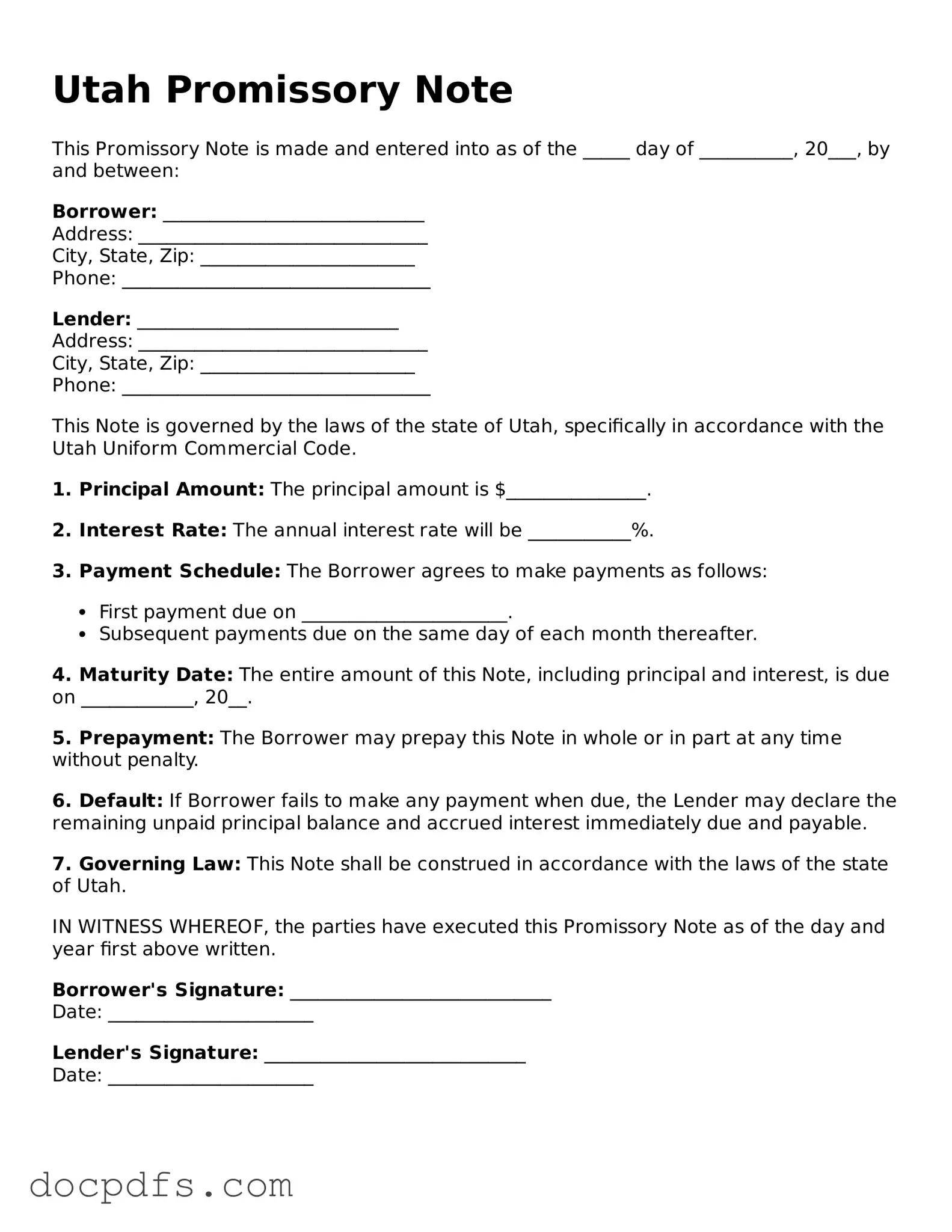What is a Utah Promissory Note?
A Utah Promissory Note is a written agreement in which one party (the borrower) promises to pay a specified amount of money to another party (the lender) under agreed-upon terms. This document outlines the amount borrowed, the interest rate, payment schedule, and any consequences for late payments or default.
Who can use a Promissory Note in Utah?
Any individual or business can use a Promissory Note in Utah. It is commonly used for personal loans, business loans, or any situation where one party lends money to another. Both the lender and borrower should be legally capable of entering into a contract.
What are the key components of a Utah Promissory Note?
A typical Utah Promissory Note includes the following components:
-
Principal Amount:
The total amount of money being borrowed.
-
Interest Rate:
The percentage charged on the principal amount.
-
Payment Schedule:
The timeline for repayments, including due dates.
-
Maturity Date:
The date by which the loan must be fully repaid.
-
Default Terms:
Conditions under which the borrower is considered in default.
-
Signatures:
Signatures of both the borrower and lender, indicating agreement.
Do I need a lawyer to create a Promissory Note?
No, you do not need a lawyer to create a Promissory Note in Utah. However, it is advisable to consult with a legal professional if you have specific concerns or if the loan amount is significant. A lawyer can ensure that the document meets all legal requirements and protects your interests.
What happens if the borrower defaults on the Promissory Note?
If the borrower defaults, the lender has the right to take legal action to recover the owed amount. This may include filing a lawsuit or pursuing other collection methods. The specific consequences of default should be clearly outlined in the Promissory Note.
Can a Promissory Note be modified?
Yes, a Promissory Note can be modified if both parties agree to the changes. It is best to document any modifications in writing and have both parties sign the amended note. This helps prevent misunderstandings in the future.
Is a Promissory Note legally binding in Utah?
Yes, a Promissory Note is legally binding in Utah as long as it meets the necessary legal requirements. Both parties must have the capacity to contract, and the terms must be clear and agreed upon. Proper execution of the document, including signatures, is essential for enforceability.
